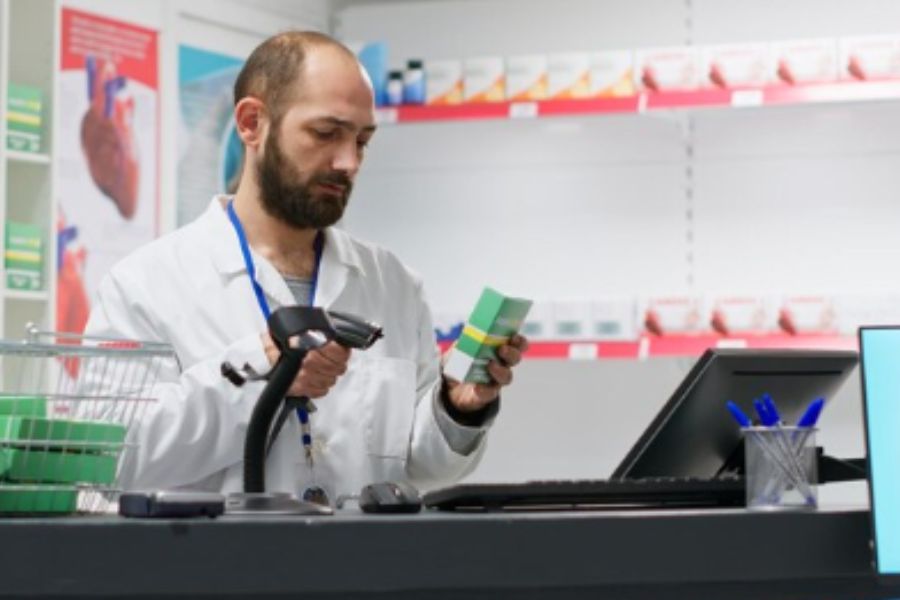Running a retail business requires flexibility in managing sales and inventory. While Shopify POS is primarily designed for mobile devices, many merchants integrate it into desktop setups to enhance their operations. With a desktop POS setup, businesses can track inventory, process sales, and manage customer data efficiently. This guide walks you through the complete process of setting up and optimizing Shopify POS for desktop, including hardware integration, workflow improvements, and feature utilization.
Highlights:
- Retailers prefer Shopify POS for desktop for its larger screen, stable internet connection, faster data entry, and full administrative access, making it easier to manage inventory, process transactions, and analyze sales data.
- Businesses need to ensure hardware compatibility, configure payment methods, connect essential peripherals like barcode scanners and receipt printers, and optimize store settings for seamless operations.
Why Do Some Stores Prefer Using Shopify POS on Desktops?
Although Shopify POS is commonly used on tablets and smartphones, several businesses find desktop setups more practical, especially for handling complex operations and high sales volumes.
Better Business Oversight
Desktop Shopify POS excels over mobile and tablet versions when businesses handle complex operations and high sales volumes. The desktop setup gives you a broader view of your business compared to mobile devices. You can easily scan through sales reports, check stock levels across locations, and handle customer profiles on a larger display. Staff training becomes more straightforward too – the familiar desktop interface makes it easy for team members to learn and use the system.
Small details matter in retail, and the desktop POS helps you stay on top of them. Print receipts, manage refunds, and apply discounts without switching between devices. The keyboard and mouse controls speed up data entry and make bulk updates less time-consuming.
Simplified Staff Training
The desktop interface is familiar to most employees, making training simpler than on mobile devices. Cashiers and managers can quickly navigate the system without the learning curve that comes with touchscreen-based POS solutions.
Hardware Convenience
Shopify merchants often choose desktop POS solutions since they already own the necessary hardware. Regular computers and laptops serve as reliable tools for managing stores and processing sales. While tablets and smartphones work well for store staff, their smaller screens can limit visibility when reviewing orders, handling payments, or sharing product details with customers.
Stable Internet Connection
Desktop computers linked to wired internet connections provide steadfast performance throughout the day. Unlike wifi-dependent devices, PCs connected through ethernet cables stay online without dropping signals – even during peak business periods. This direct connection prevents the frustrating network disruptions that often plague wireless devices.
Better Screen Display
The larger desktop screens display more information at once, helping staff see complete customer histories and inventory numbers without scrolling. Staff members can quickly scan available payment options and make personalized suggestions to each shopper, creating better shopping experiences. The spacious layout puts key details within easy view, making customer interactions smoother and more focused.
Full Administrative Access
Desktop computers let you access the full range of Shopify POS features beyond just processing sales. Their robust processing power handles demanding tasks like running detailed reports, managing large inventories, and analyzing customer data – all while keeping multiple browser windows open. Unlike mobile POS apps that focus solely on transactions, desktop systems maintain smooth performance even when executing resource-intensive administrative work.
Guide to Setting Up Shopify POS for Desktop
Shopify POS connects your online store with your physical shop, letting you process in-person sales through your desktop computer. This guide covers the basic steps to get your Shopify POS for desktop system up and running. You’ll learn exactly what to download, where to click, and how to start making sales.
Step 1: Visit the Shopify POS Desktop Installation Page
Go to the Shopify POS desktop installation page.
Click the download button that matches your computer’s system – Windows or macOS – to get the Shopify POS app. The page contains different versions of the app to suit your specific operating system. Once you find the right version, start the download process.
Step 2: Install Shopify POS for Desktop
- Windows users: Look for the downloaded file in your Downloads folder (or where you saved it). Double-click the file to start setup. A window will appear with simple steps – follow these to complete the installation.
- Mac users: Open the downloaded file. When you see the installation window, drag the Shopify POS icon to your Applications folder. The system will copy the app to your computer. Once finished, the app is installed and ready for use.
Step 3: Launch Shopify POS and Sign In
Open the Shopify POS app on your desktop computer.
Log in with your Shopify account details. If you’re new to Shopify, you can create an account during the login process.
Step 4: Connect Your Hardware to POS
Connect your receipt printers, barcode scanners, and cash drawers to your desktop.
Open the Settings menu in the app, then click Hardware to check that your POS system detects all connected devices.
Step 5: Configure Store Settings
Open Settings in the Shopify POS app.
In the General Settings section, update your store’s basic details like name, address, and currency. Add your tax settings based on where you operate and your tax obligations.
Step 6: Add Products to Your Inventory
Go to the Products section in Shopify POS.
Click Add Product to input your product details, including names, prices, and SKU numbers.
Step 7: Set Up Payment Methods
Open Settings in Shopify POS.
Select Payment Types and choose which payment options you’ll accept from customers, like cash or credit cards.
Step 8: Set Up Your Receipts
Go to Receipts under Settings. Edit your receipt and email designs to match your brand and include the right customer information.
Installing Shopify POS for desktop follows a clear path – you’ll pick your pricing package and set up your payment methods. Each business can adjust its POS settings to fit its unique store layout, products, and sales patterns. This makes the system work exactly how your shop needs it to.
ConnectPOS – A Reliable POS Solution for Shopify merchants
If you’ve been using Shopify for a while—or even if you’re just starting out—you might be looking for better ways to integrate desktop POS solutions into your business. While Shopify POS works well for many retailers, some may need more flexibility, stronger integrations, or multi-location support.
That’s where ConnectPOS comes in.
ConnectPOS works across iOS and Windows devices, connecting smoothly with your existing hardware. The system keeps your online and in-store data in perfect sync, updating inventory and sales information instantly across all locations. We build custom Shopify POS solutions for Shopify and Shopify Plus merchants that match your specific business requirements.
- Store Operations
Running multiple locations becomes simple through a central dashboard that updates inventory and sales in real-time. The system tracks stock levels precisely across warehouses, preventing overstock and stockouts. Merchants can build stronger customer relationships using detailed profiles, rewards programs, and gift cards integrated directly into the sales process.
- Sales Capabilities
The platform lets you monitor and process orders through every sales channel while creating consistent shopping experiences across physical stores and digital platforms. Detailed reports provide clear insights on sales, products, and customer behavior to guide business decisions.
- Smart Integration System
ConnectPOS connects naturally with essential business tools, including accounting software, payment processors, ERP systems, and CRM platforms. This integration network creates a cohesive business environment where data flows smoothly between systems.
- Tailored to Your Business
The system prints receipts in various languages for international customers and connects with additional business tools through open APIs. Customers enjoy self-service options and personalized shopping experiences, making each interaction more meaningful.
Each feature works together to create a reliable system that grows with your business. ConnectPOS turns your POS into a complete retail command center, helping you serve customers better while keeping your operations running smoothly.
FAQs: Shopify POS for Desktop
Q1: Can I run Shopify POS on a PC?
The dedicated Shopify POS app is designed specifically for iOS devices – iPads and iPhones. While you can’t install the full POS app on your PC, you still have access to many POS-related functions through your desktop browser by logging into your Shopify admin dashboard. This includes viewing sales history, managing inventory, handling customer profiles, and generating reports. For direct sales processing though, you’ll need to use an iOS device with the official POS app.
Q2: Can I use a laptop as a POS system?
Yes, many POS platforms work perfectly on laptops. Some reliable options include:
- Magestore POS: Built for both online and offline retail, with strong inventory management
- Lightspeed POS: Specializes in detailed reporting and multi-location support
- Square POS: Known for its user-friendly interface and integrated payment processing
These systems offer full POS functionality through web browsers, making them ideal for laptop use. Just pair them with compatible card readers and receipt printers to create a complete point-of-sale setup.
Q3: Can I use Shopify POS without hardware?
While you can install and explore the Shopify POS app without additional hardware, you’ll need certain equipment for actual transactions. The minimum requirement is a supported card reader to process credit card payments securely. For a complete setup, consider:
- Card reader for payment processing
- Receipt printer for physical receipts
- Barcode scanner for quick product lookup
- Cash drawer for handling cash transactions
The specific hardware you need will depend on your business type and transaction volume. Shopify provides a list of compatible hardware options for different business needs.
To Conclude
Shopify POS for desktop can transform how retailers manage sales, inventory, and customer interactions. By leveraging desktop capabilities, businesses gain better oversight, faster data entry, and stable performance.
For those wanting an efficient and scalable POS solution, ConnectPOS offers advanced features tailored to Shopify merchants. Ready to get started with a better POS solution? Contact ConnectPOS today and transform your retail operations!



